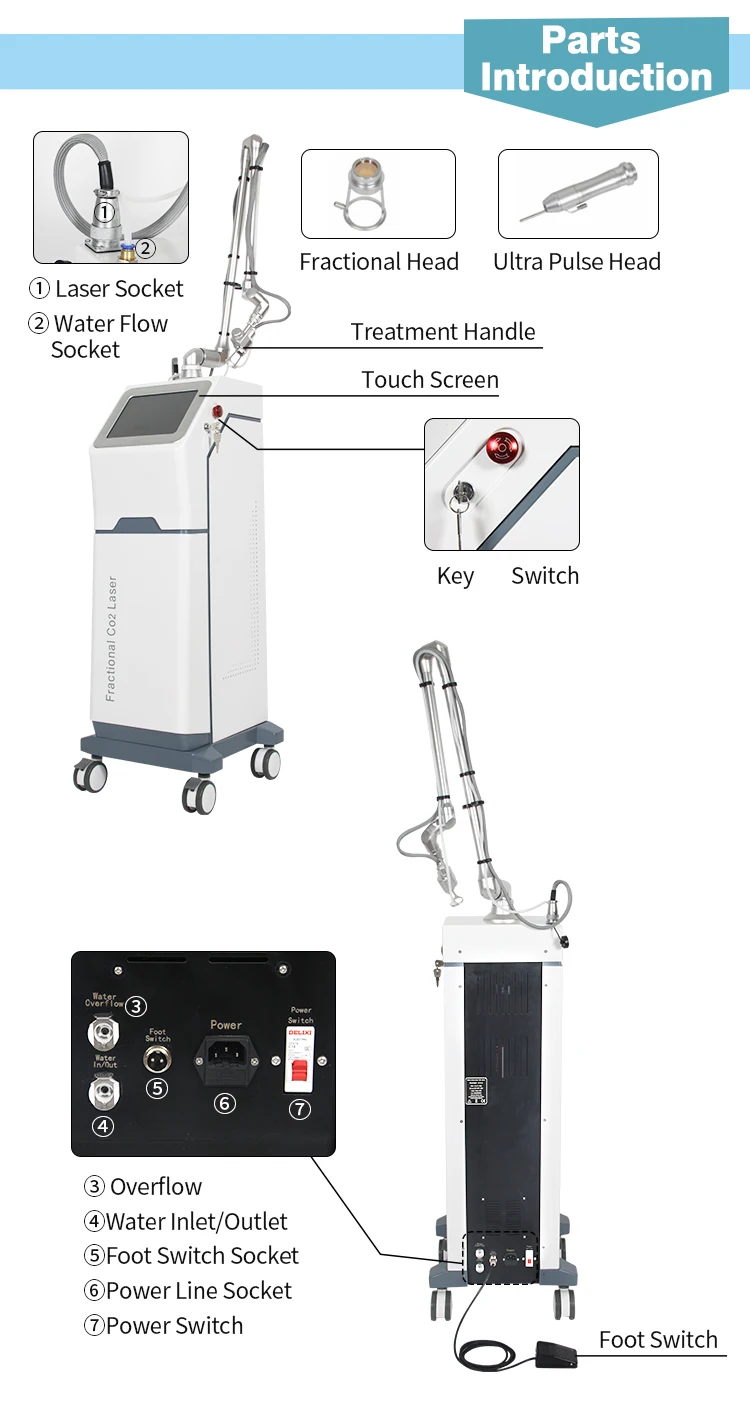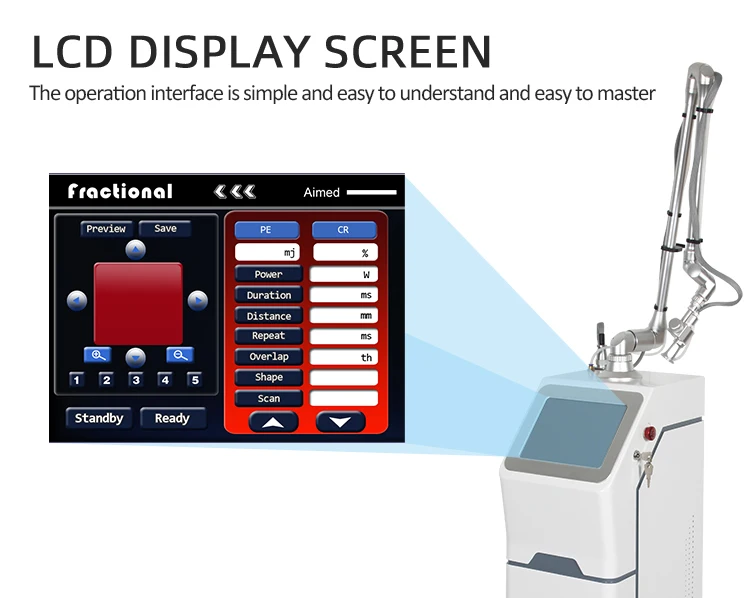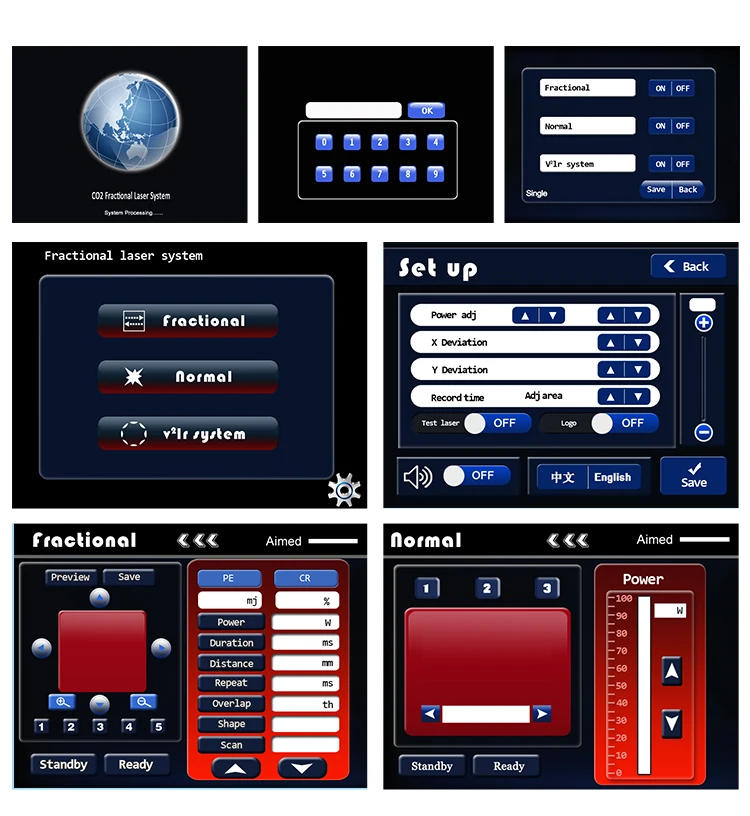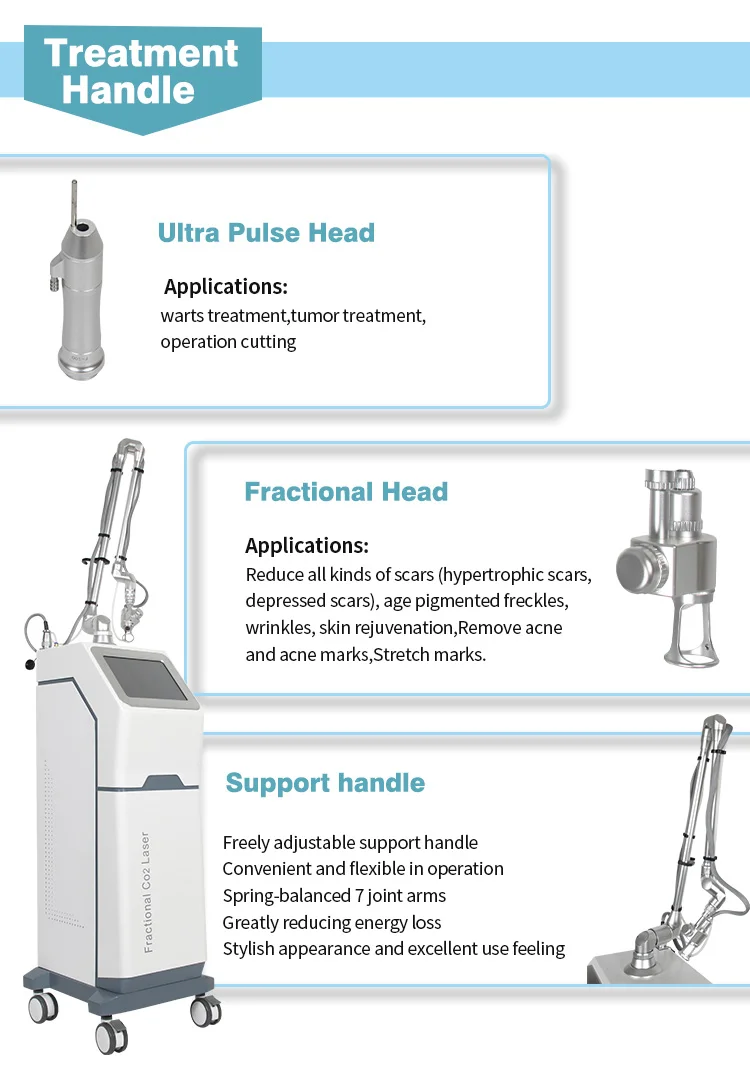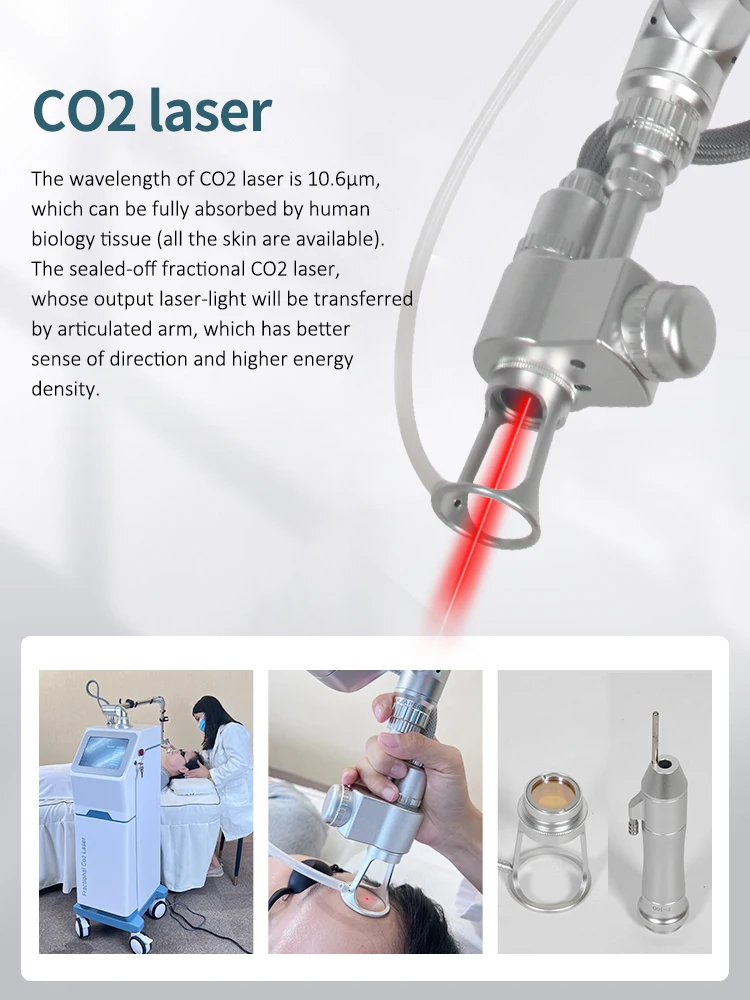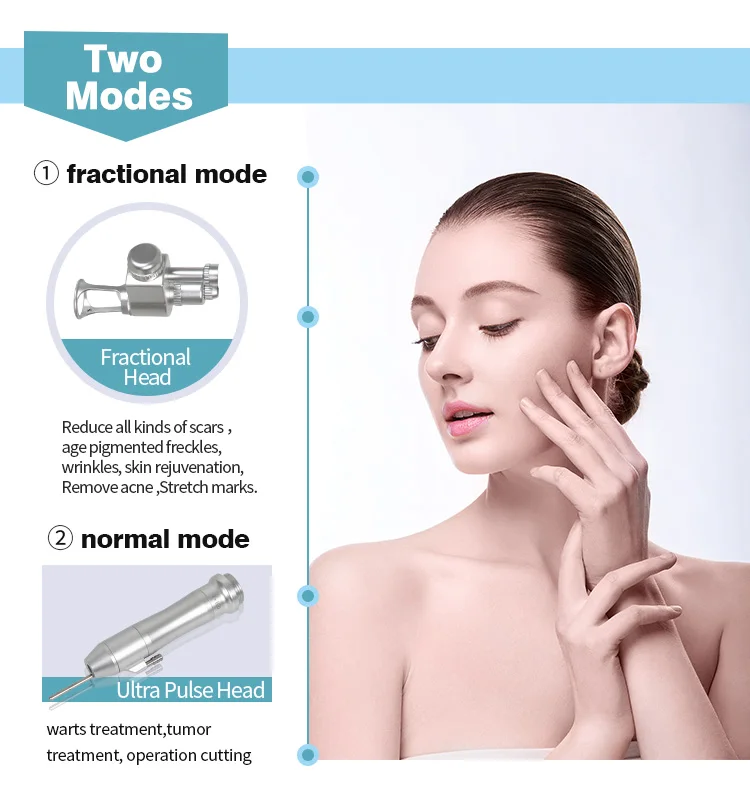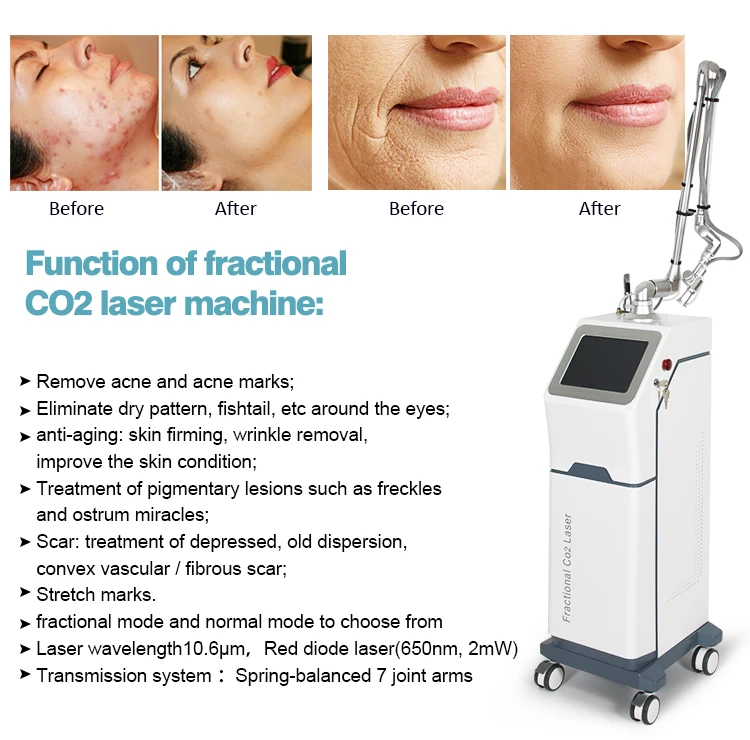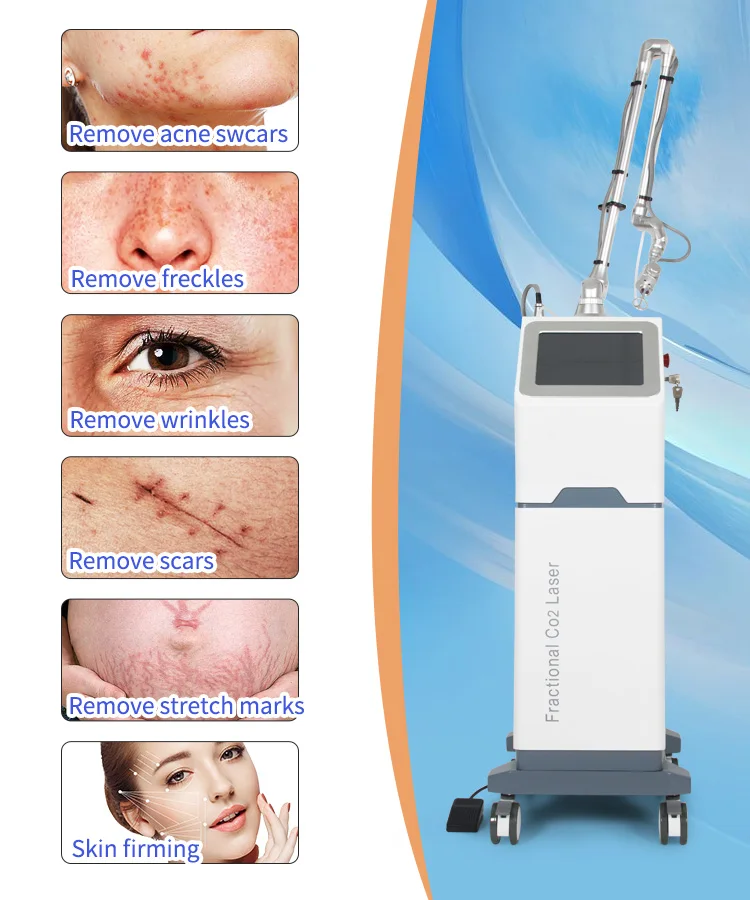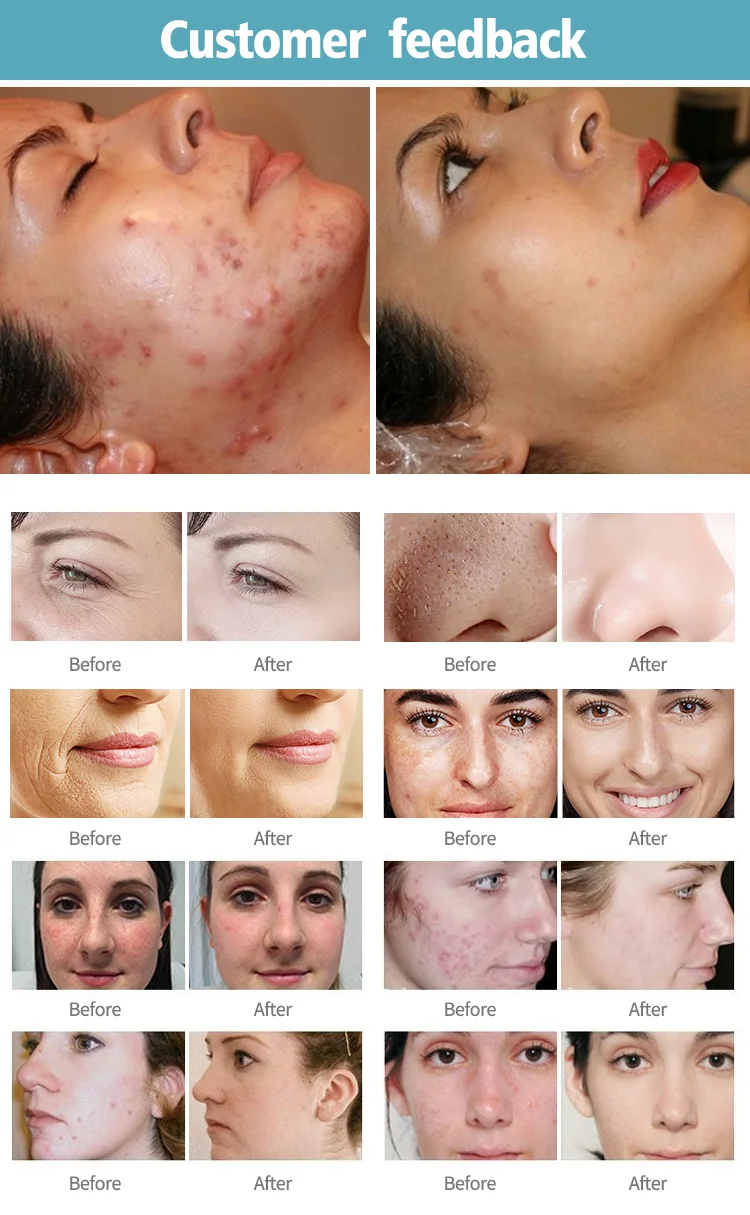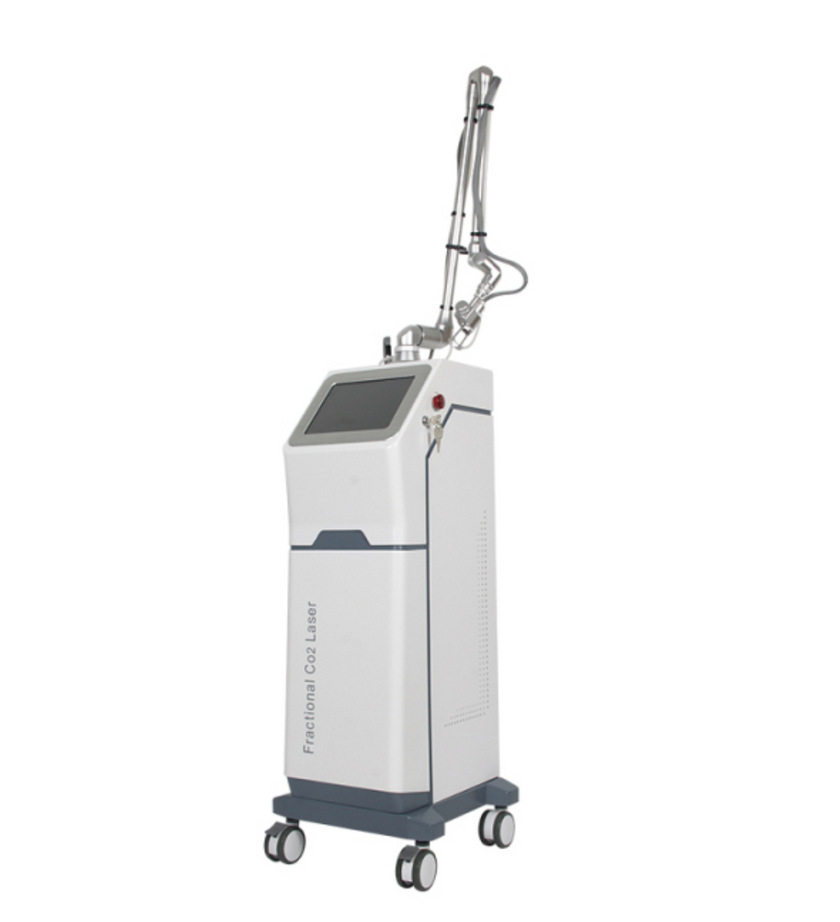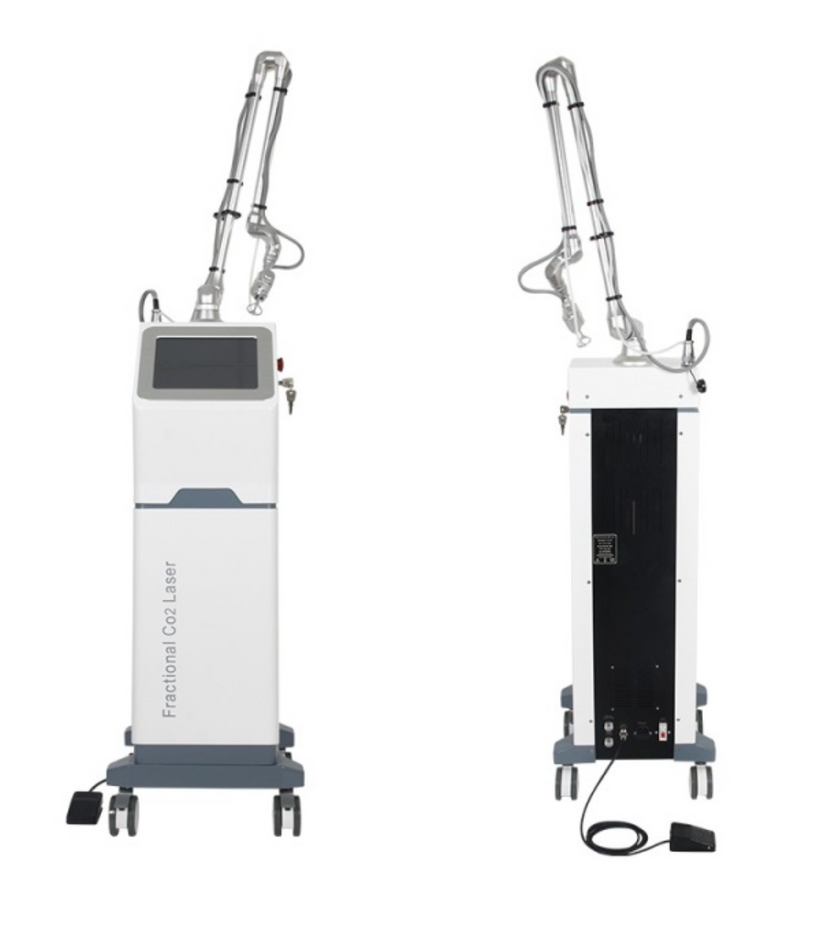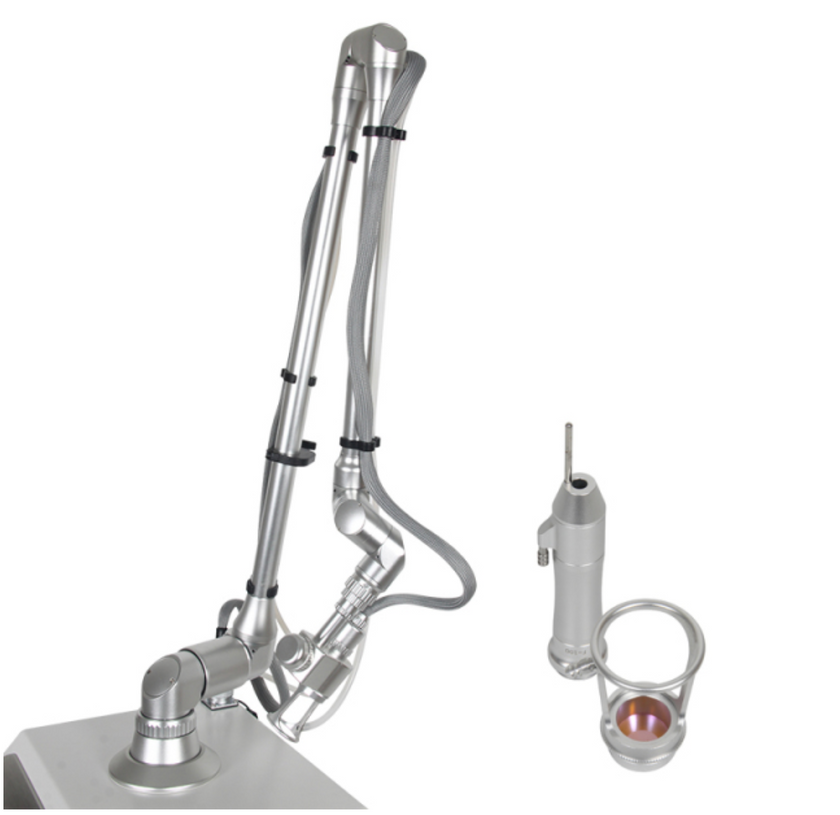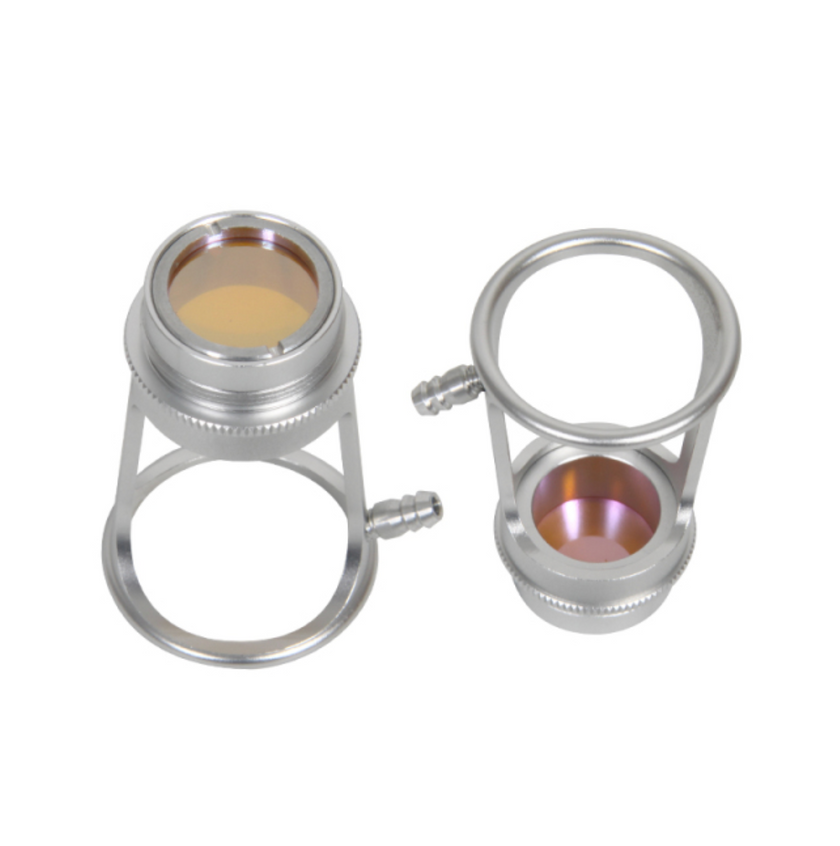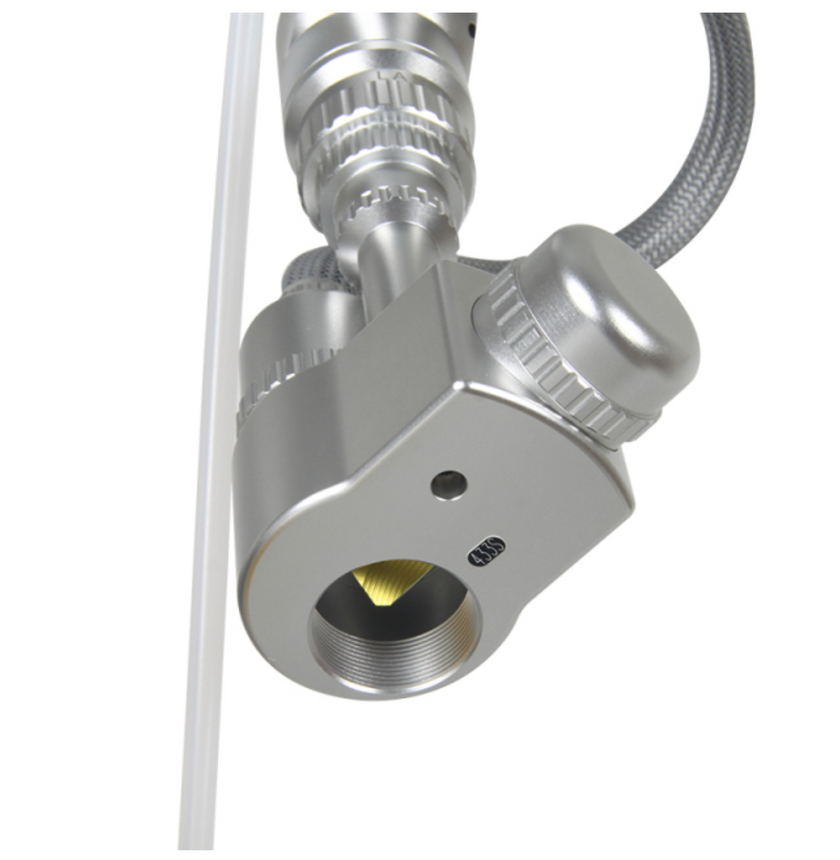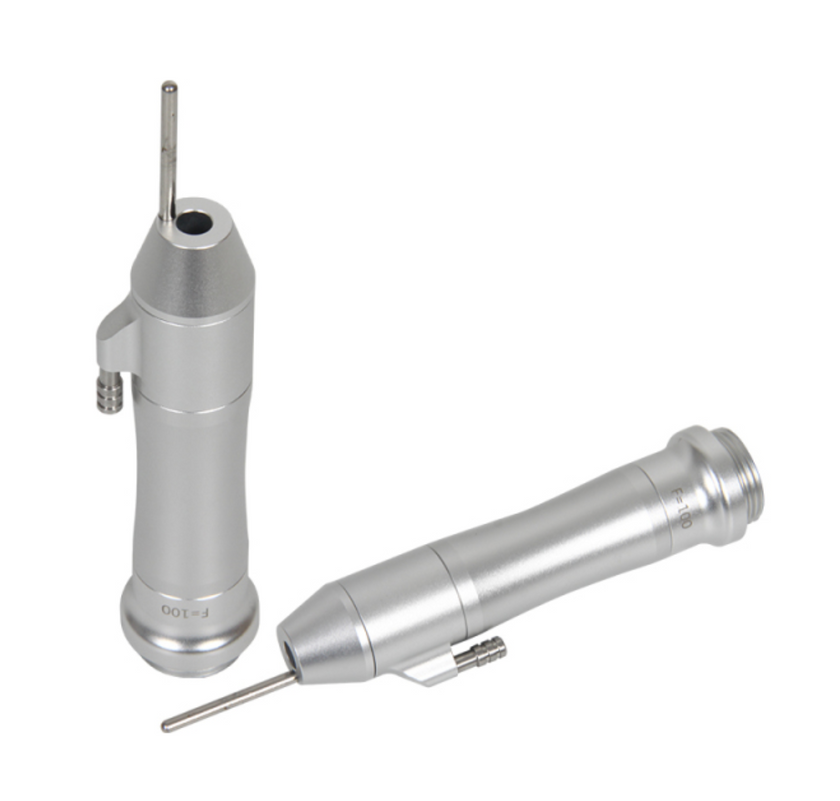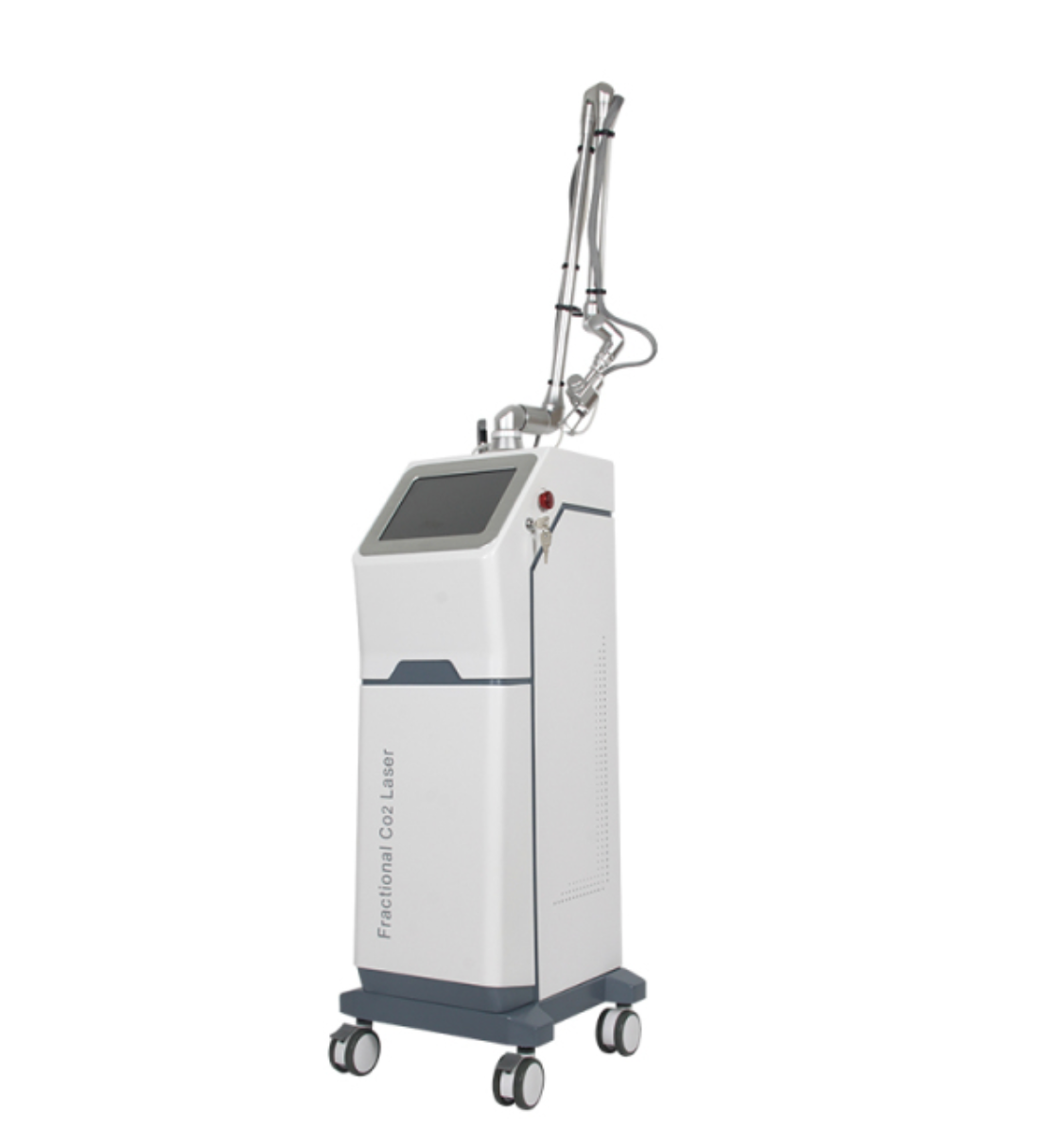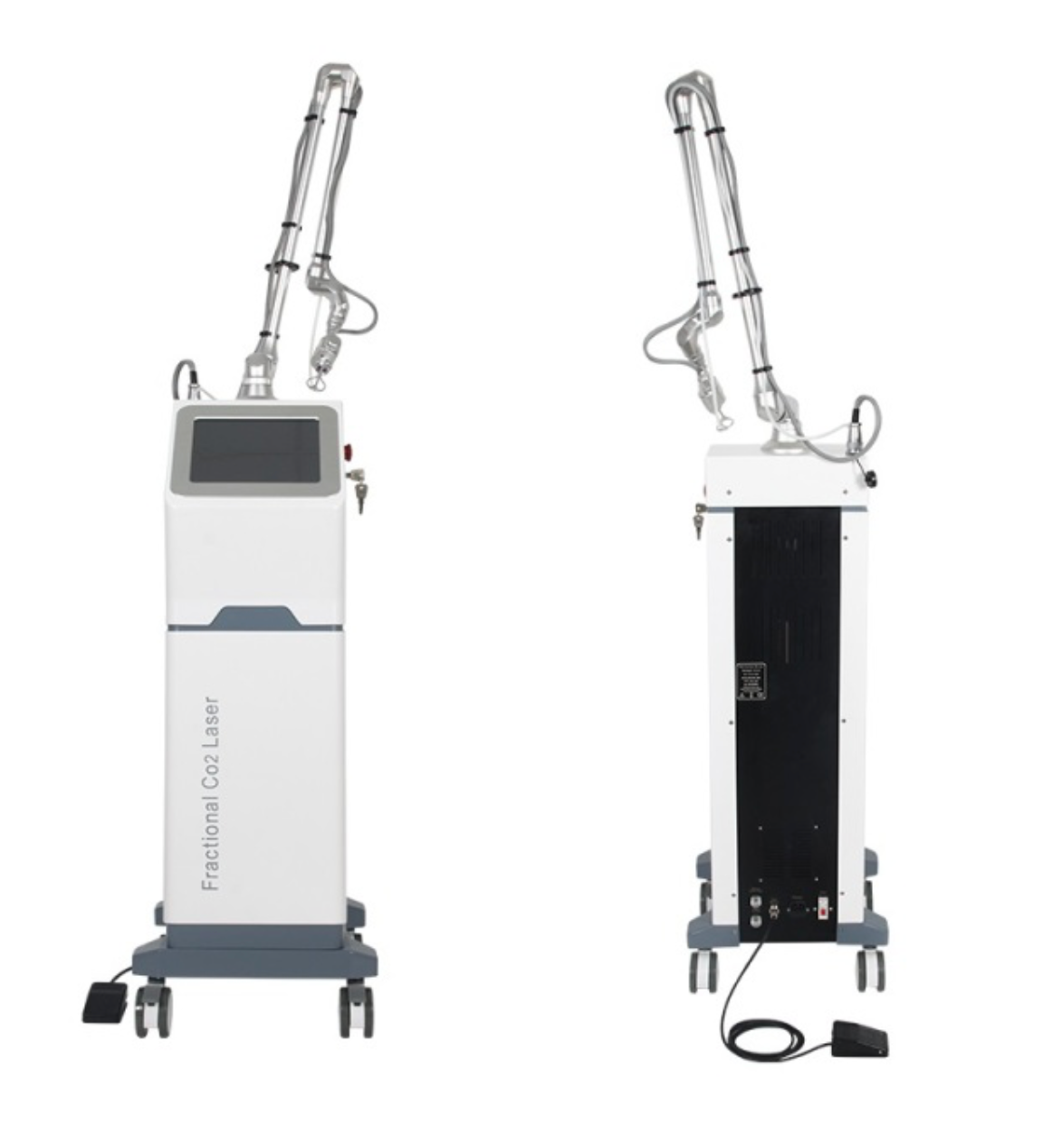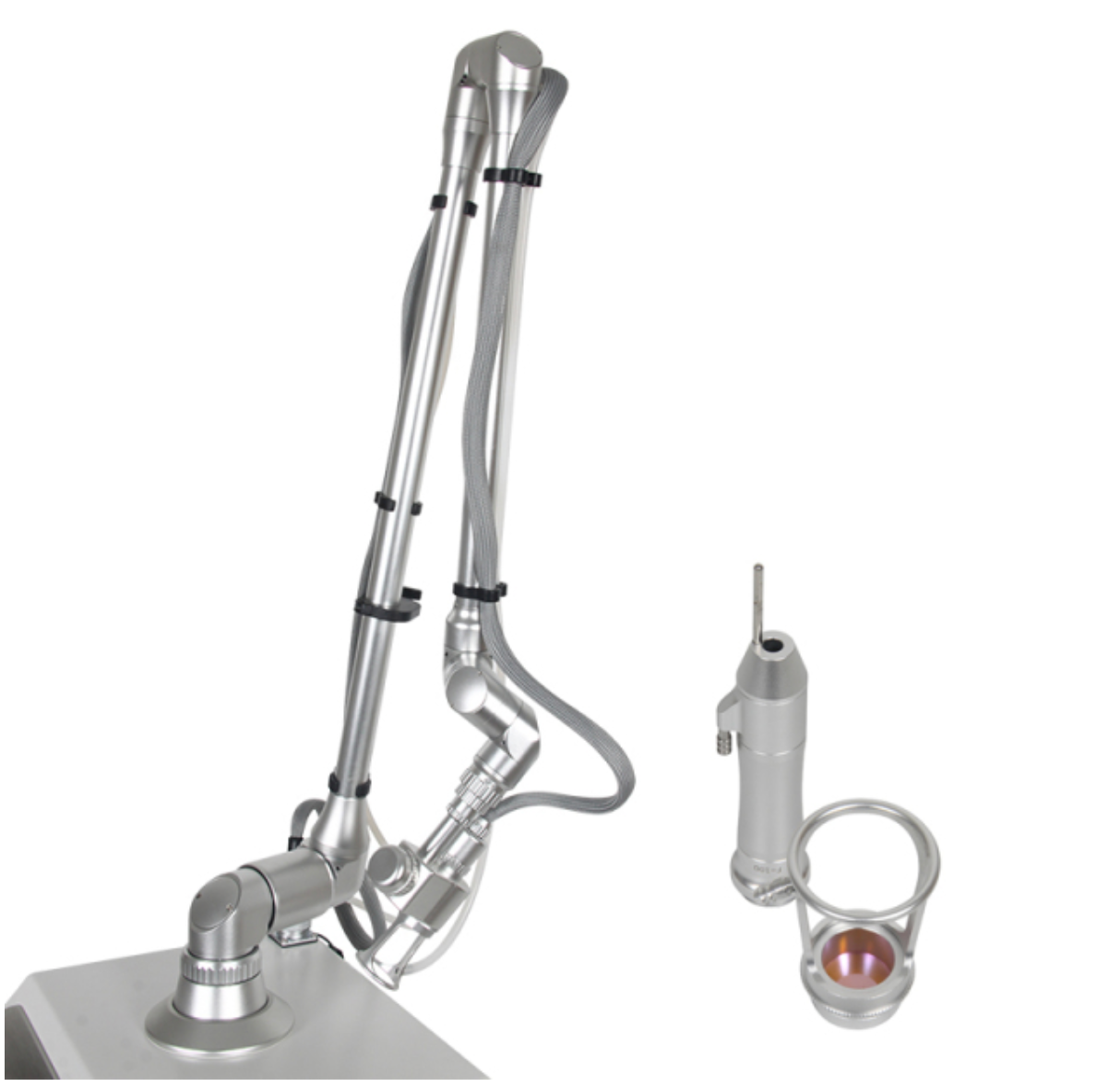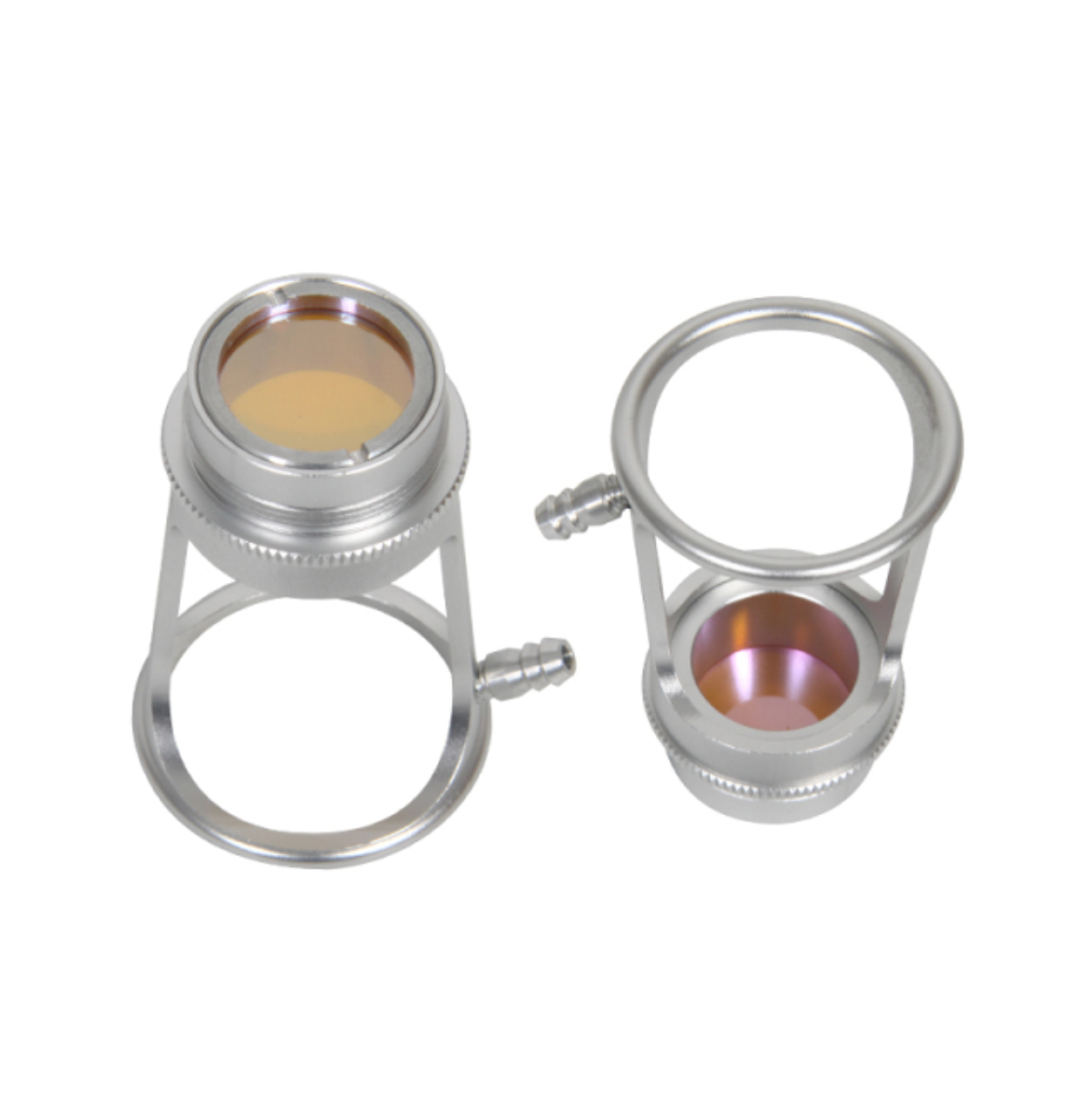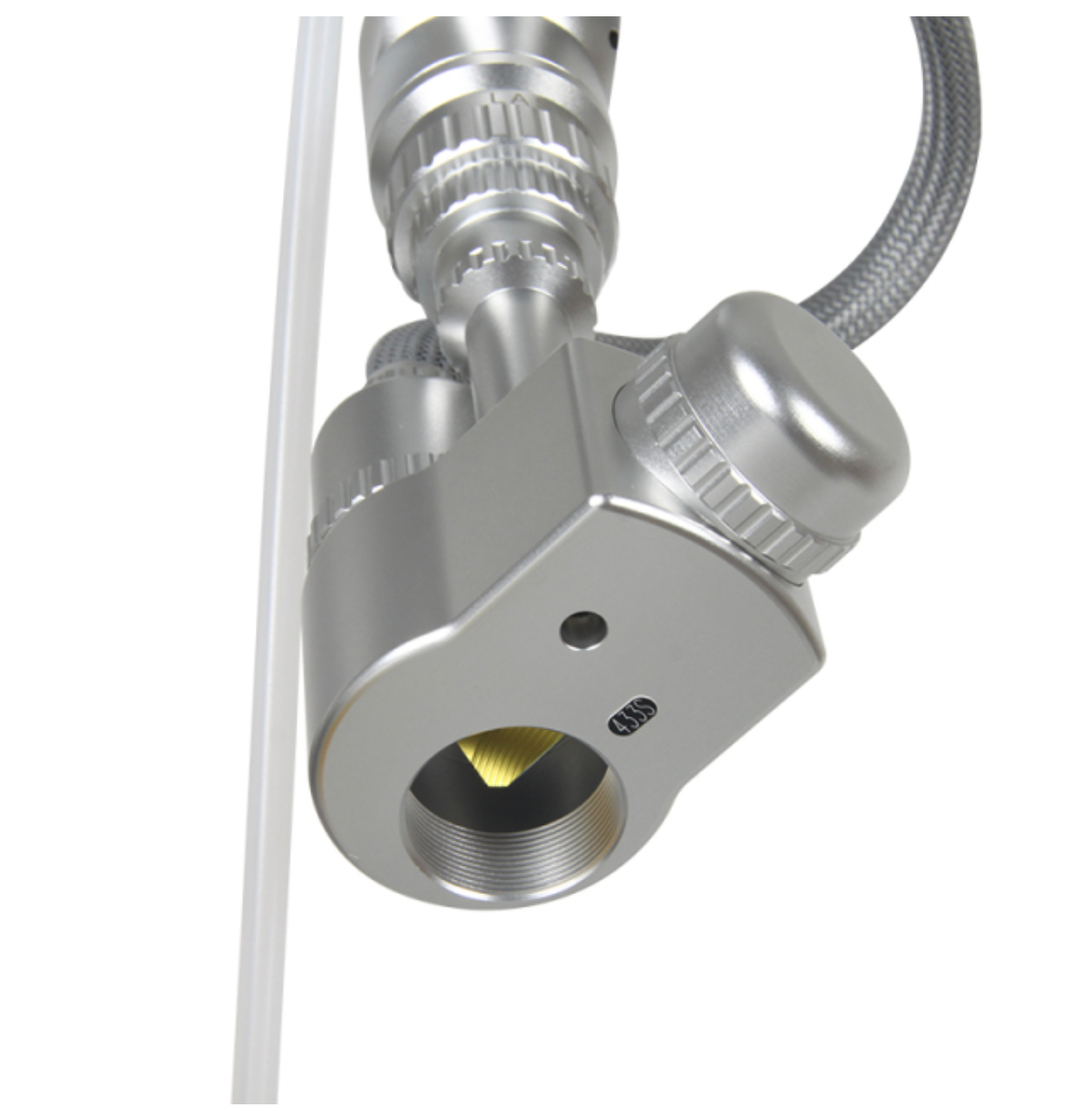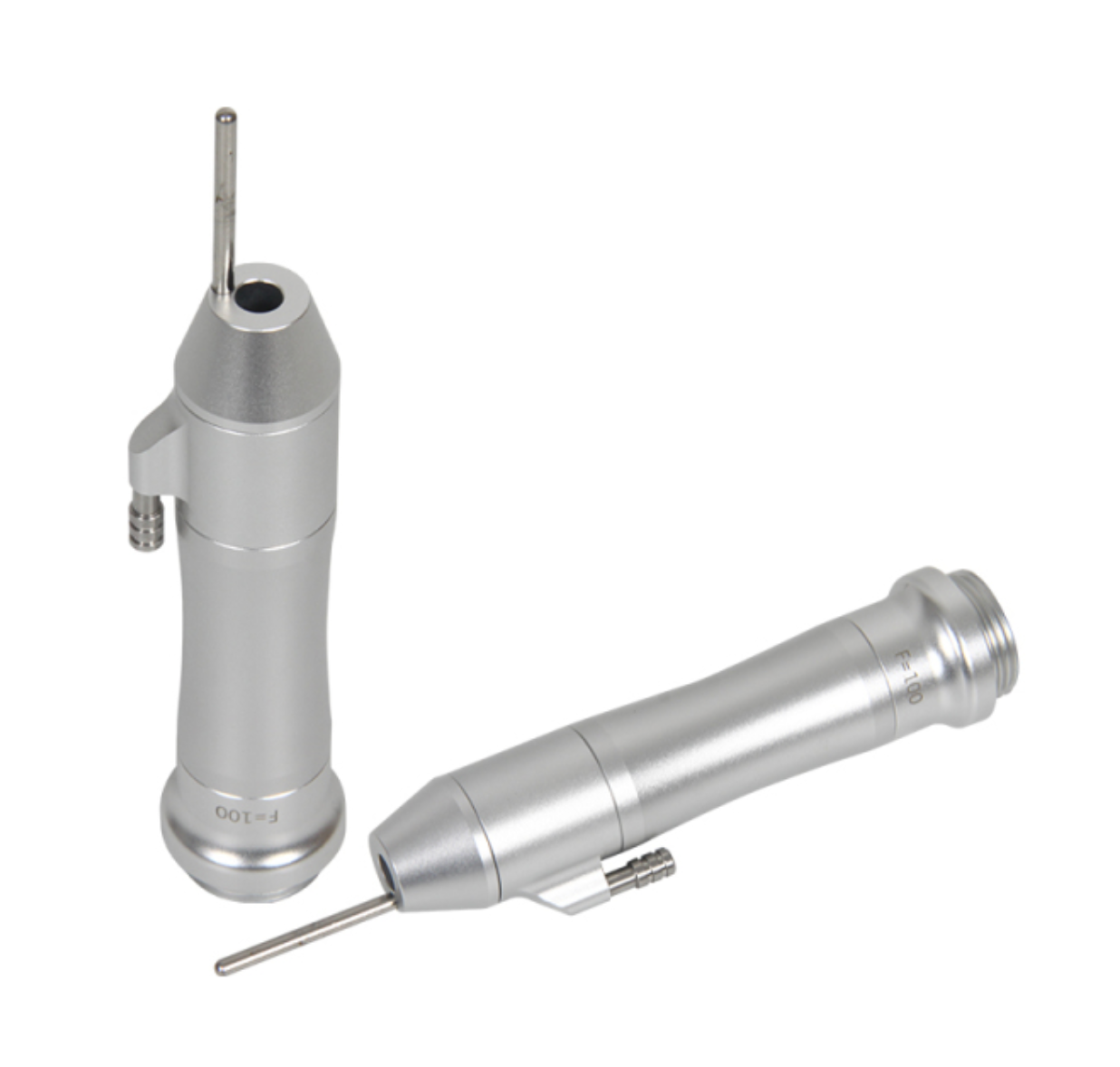- Product label: Sold out
Vertical pixel laser beauty machine for stretch marks and wrinkles removal.
DESCRIPTION
Product Description
The clinical mechanism of pixel laser is based on the theory of "minimally invasive wound repair". Skin tissue has the ability to self-repair wounds and when damaged by trauma, it is able to heal and repair itself.
Product Parameters
- Working mode: Single pulse, continuous pulse, repeated pulse, ultra pulse
- Output power: 0-60W (adjustable)
- Input power: 450VA
- Laser type: Sealed CO2 laser
- Laser wavelength: 10.6μm
- Divergence angle: 4 mrad
- Focused spot diameter: ≤0.4mm
- Tip focus: F=100mm (optional)
- Pulse width: 0.02-0.99s
- Aiming beam: Red diode laser (650nm, 2mW)
- Transmission system: Spring-balanced 7-joint articulated arm
- Cooling system: Internal circulation cooling
- Display screen: LCD
- Working temperature: 5-40°C
- Humidity: <80%
- Atmospheric pressure: 86Kpa-106Kpa
- Input power: AC220V ±10%, 50Hz
- Preheating time: >5 minutes
- Electromagnetic interference: No electromagnetic interference
- Other working conditions: No obvious vibration or airflow
- Net weight: 37 kg
- Dimensions: 183cm (with arms) × 45 × 40cm
Theory of Operation
The wavelength of CO2 laser is 10.6μm, which is completely absorbed by human biological tissue (suitable for all skin types). The fractional sealed CO2 laser emits light transferred by an articulated arm, providing greater directionality and energy density. The CO2 laser operates in the invisible infrared waveband, and a visible aiming beam provided by a red diode laser is required to indicate the impact of the treatment on the tissue.
As the laser beam passes through the focusing lens, the heat produced vaporizes the target tissue. With fractional laser, the laser beam is split into many separate micro-beams, leaving small areas of skin intact between the beams. These untreated areas promote faster healing with a lower risk of complications. The areas treated by the fractional micro-beams, called micro-treatment zones, cause enough laser damage to stimulate the production of new collagen, resulting in facial skin rejuvenation.
